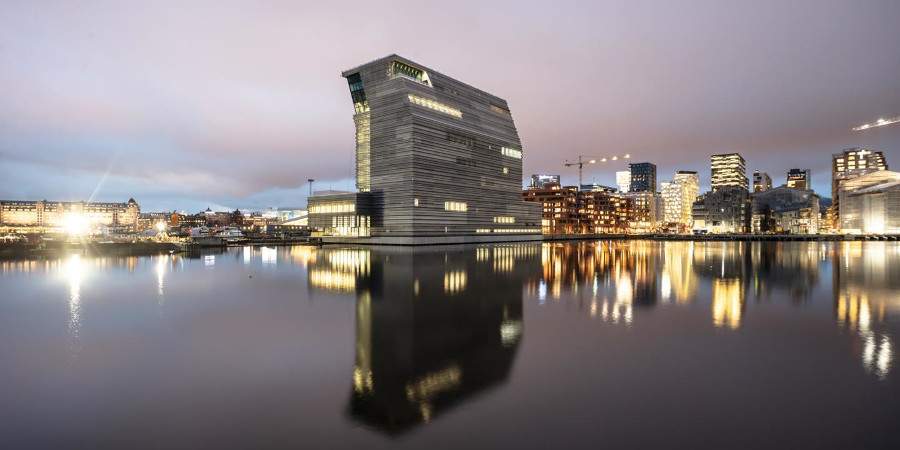The new Munchmuseet, the museum entirely dedicated to Edvard Munch, has opened in Oslo
It was announced in early 2021: in Oslo’s Bjørvika district, the new Munchmuseet, among the world’s largest museums dedicated to a single artist, opened on October 22. The Munchmuseet is in fact entirely dedicated to Edvard Munch (Løten, 1863 - Oslo, 1944) and is located in a modern building on Oslo’s waterfront. Four years before his death, Munch bequeathed all his possessions to the Municipality of Oslo; already there was talk of creating a museum, but it was not until 1946 that construction was approved. One hundred years after Munch’s birth, in 1963, a museum dedicated to the artist was opened in a historic building in Tøyen. Despite the museum’s renovations and after the various vicissitudes it has undergone, including the theft in 2004 of two celebrated paintings, TheScream and Madonna, later recovered in 2006 thanks to a police operation, a decision was made in 2008 to move the collection to another museum, and a new architectural competition was then held. The foundation stone for the new museum in the Bjørvika district was laid in the fall of 2016, after heated debate about both design and location. Jens Richter ofEstudio Herreros, who together with Juan Herreros designed the building, said that “the museum’s façade will give Munch an enigmatic and ever-changing presence, reflecting Oslo’s constantly changing lighting conditions throughout the day and during different seasons.”
The concept of the new building is based on the idea of a vertical museum: 60 meters high, clad in translucent, perforated recycled aluminum sheets, and with the characteristic slit at the top, the building is clearly visible and recognizable from all sides. Many exhibition rooms spread over several floors allow for large variations in ceiling height and size, so that both permanent and temporary exhibitions can be offered in an ideal environment. The tower has a static and a dynamic part: the static part is a concrete construction that meets all requirements for safety, climate and daylight control; the dynamic part has a transparent and open façade with a view of the city, where the public can move between the exhibition areas. Indeed, the architects’ intention is for the public to open their eyes not only to art but also to the city, placing the building in dialogue with the urban development of the area. The building is also an expression of thecollective environmental commitment in Norwegian society, as it needs low energy requirements, thanks to well-insulated windows, good thermal insulation, heat recovery, and sunlight control to avoid large temperature changes. Measures have also been introduced to reduce climate impact: the new museum is connected to a district heating system and a seawater cooling system, as well as an energy management system that optimizes energy use in the building. There is no parking adjacent to the facility, either for guests or staff. The location near the city’s largest traffic hub and one hundred bicycle parking spaces replaces the need for motorized passenger transport.
The new Munchmuseet offers art and culture on thirteen floors, and from here one can enjoy a splendid view of the city. A rich program of meetings and discussions, concerts, readings and workshops for adults and children is planned to create a museum open to all.
Photo © Adrià Goula
 |
| The new Munchmuseet, the museum entirely dedicated to Edvard Munch, has opened in Oslo |
Warning: the translation into English of the original Italian article was created using automatic tools. We undertake to review all articles, but we do not guarantee the total absence of inaccuracies in the translation due to the program. You can find the original by clicking on the ITA button. If you find any mistake,please contact us.




























